Protesters say a massacre took place in this Mexican town. Now it’s become a rallying cry against the government
- Share via
In front of the charred shell of a bus, a six-member norteño band began to play. Their stage was just a patch of dirt, but the band had a story to tell — a tale of protest and violence.
They came here because the bus played a role in that story, and in the tradition of the Mexican corrido, or ballad, Grupo Accion Oaxaca recounted what happened here in the crossroads town of Asuncion Nochixtlan. Let me tell you a story, the swaggering singer began.
Nochixtlan is in mourning, a bad government at fault.
Here I raise my voice…
Where we are living appears a war zone.
We don’t want more dead.
With bullets flying wildly, columns of smoke rising from blazing vehicles and the air reeking of tear gas, Patricia Sanchez Meza feared for her only son, Jesus Cadena Sanchez.
Like other young men in Nochixtlan, Sanchez had responded to frantic cries for aid blaring from the loudspeaker of Santa Maria de la Asuncion Church on the morning of June 19.
“The bells of the church were ringing, and people were calling for help,” recalled Sanchez, speaking softly in her home here, 56 miles northeast of Oaxaca City. “They said many were wounded.”
Police had descended on a road barricade erected by protesting teachers locked in an angry dispute with the federal government. People were fleeing the confrontation through the nearby cemetery, shouting that there was shooting. Cellphone service was erratic, and Sanchez kept trying to reach her son.
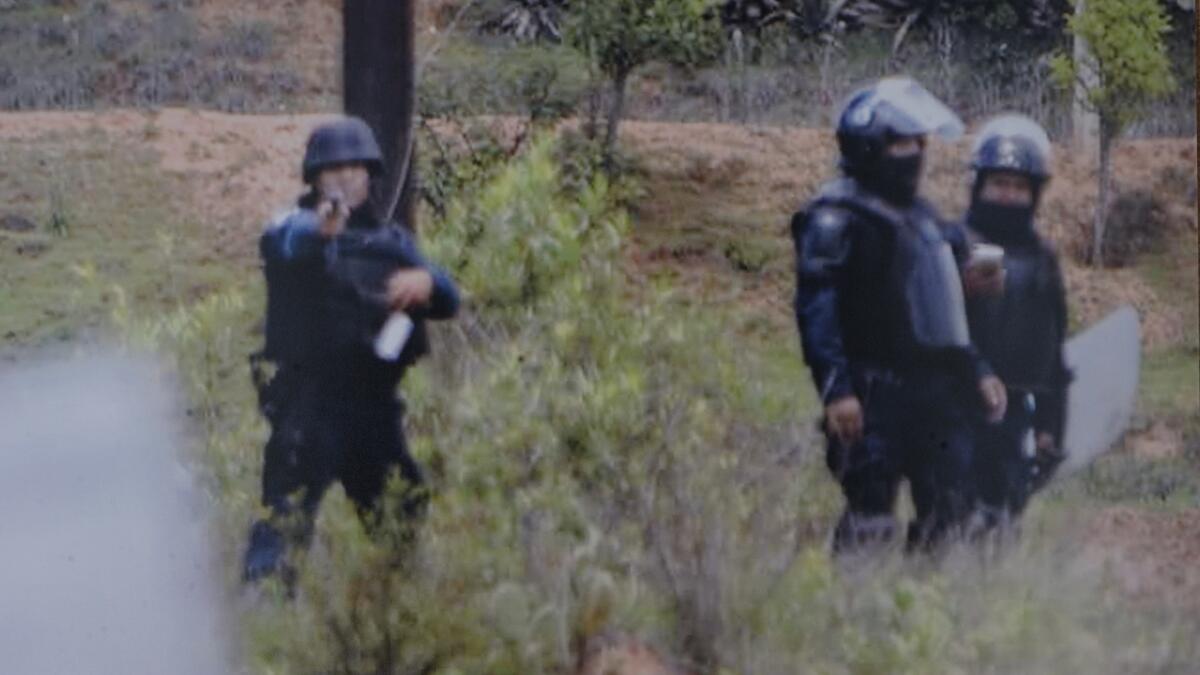
Finally, at about 11:20 a.m., Sanchez’s son — a former volunteer lay worker who taught catechism to children at the church — answered his mobile.
“They have us here by the bus,” he told his mother, referring to one of the vehicles stranded in the mayhem. He said he had suffered a “graze” wound.
“Come home now so I can cure you,” she implored.
“Yes, mama, I’m coming right now,” he responded, she recalled, though he also added: “Help me, come for me.”
The teachers who died in that confrontation
May God welcome them in heaven,
We will always remember them.
They fought for our homeland until the last minute.
Teachers opposed to government education reform plans have been blocking highways in Oaxaca state for weeks. Officials say the blockades have cost tens of millions of dollars in lost revenue and in some cases led to shortages of food and gasoline. The barricade in Nochixtlan blocked the main highway linking Oaxaca City, the state capital, and Mexico City.
“Nochixtlan!” is now often chanted or is emblazoned on protest placards along with the name of another infamous rural town, Ayotzinapa, in adjoining Guerrero state.
Ayotzinapa hosts a school attended by 43 students who disappeared in 2014 and are presumed dead, in a slaughter that sparked nationwide protests and profoundly tarnished the image of the government of President Enrique Peña Nieto. Now, what critics label the massacre at Nochixtlan has become another blot on the government’s record.
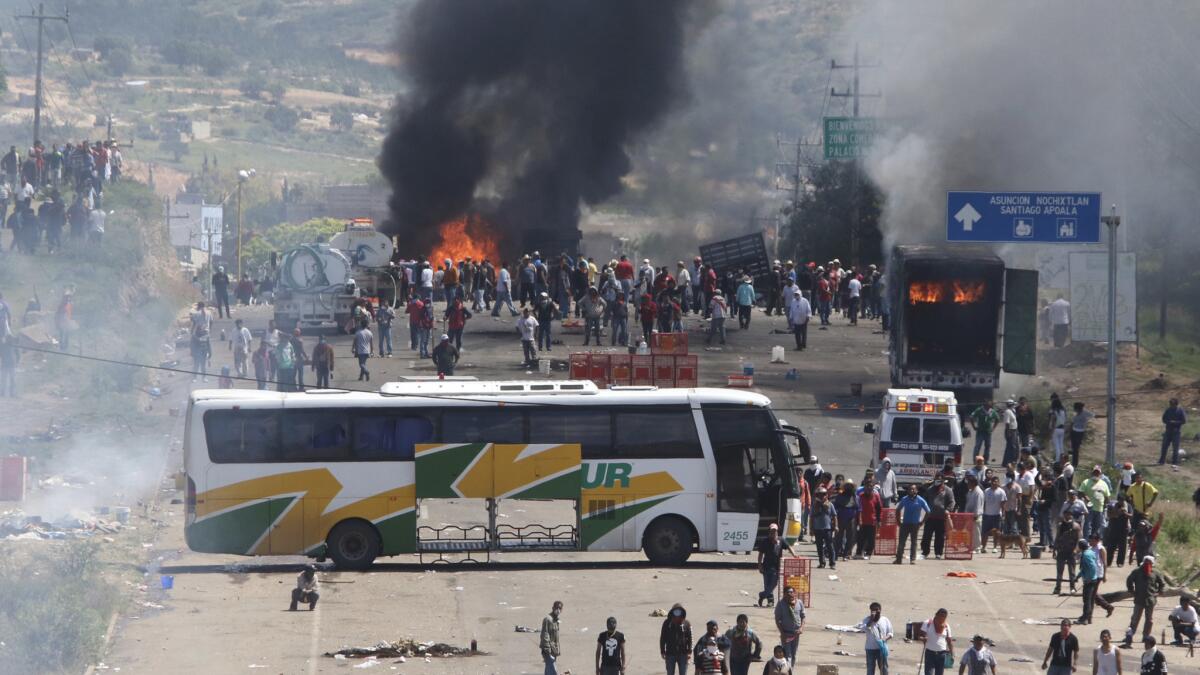
Just as the fate of the students of Ayotzinapa remains hazy, what exactly happened at Nochixtlan is still opaque.
Initially, the head of the federal police, Enrique Galindo, denied to journalists that authorities had opened fire. But video images apparently showing police firing forced an official acknowledgement that officers had discharged their weapons—in self-defense, authorities said, after being assaulted with rocks, fireworks and bullets.
“Only at the end of the process did personnel arrive with arms,” Galindo assured reporters in June. “We had already ordered a strategic retreat.”
He blamed unspecified “infiltrators” for firing upon police and civilians.
The federal attorney general’s office has said it is investigating.
In his report to federal legislators in July, the human rights ombudsman for Oaxaca state, Arturo Peimbert Calvo, raised questions about the massive law enforcement operation, which involved about 800 federal and state officers, some of whom arrived in helicopters. According to the ombudsman, the force quickly cleared the roadblock, just outside the town of 18,000, but then advanced into more urban areas.
“If they had lifted the blockade in 15 minutes, why did they keep pursuing the residents?” Calvo asked.
Police say they responded mostly with tear gas and rubber bullets after protesters attacked them. Teachers and their allies describe the police action as a premeditated strike on innocent civilians and accuse police of occupying a hospital and intimidating the wounded.
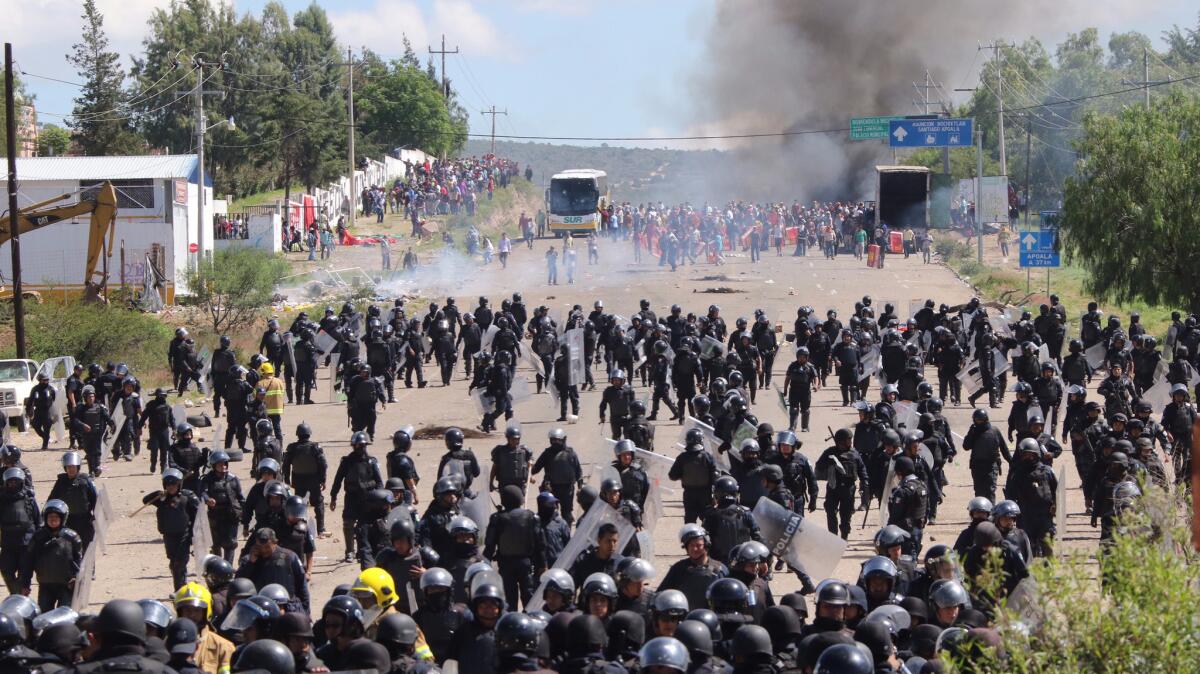
Video footage from the day captures some of the tumult that turned the normally tranquil town in the largely indigenous Mixtec region into a battleground from about 7 a.m. until about 5 p.m.
Helmeted police in riot gear huddle behind transparent shields, confronting rock- and fireworks-tossing protesters on the other side of barriers crafted of burning cars and trucks. Among the vehicles set ablaze was a tractor-trailer hauling cages of chickens. The cages went tumbling and stunned fowl littered the road, many still trapped in their plastic coops.
In another clip, a policeman is seen crouching and apparently firing from behind the cover of a tire repair shop, an image that has been widely circulated here. The stenciled images of a pair of policemen now adorn the exterior walls of the tire shop, Vulcanizadora Reyes.
City Hall erupted in flames, apparently set on fire by people enraged at the police. Also ablaze were a hotel, police headquarters, the post office and the town’s only ATM.
The toll of June 19 included almost 200 injured — 155 civilians and 43 police officers, according to the ombudsman’s report. Eighty-four people suffered gunshot wounds.
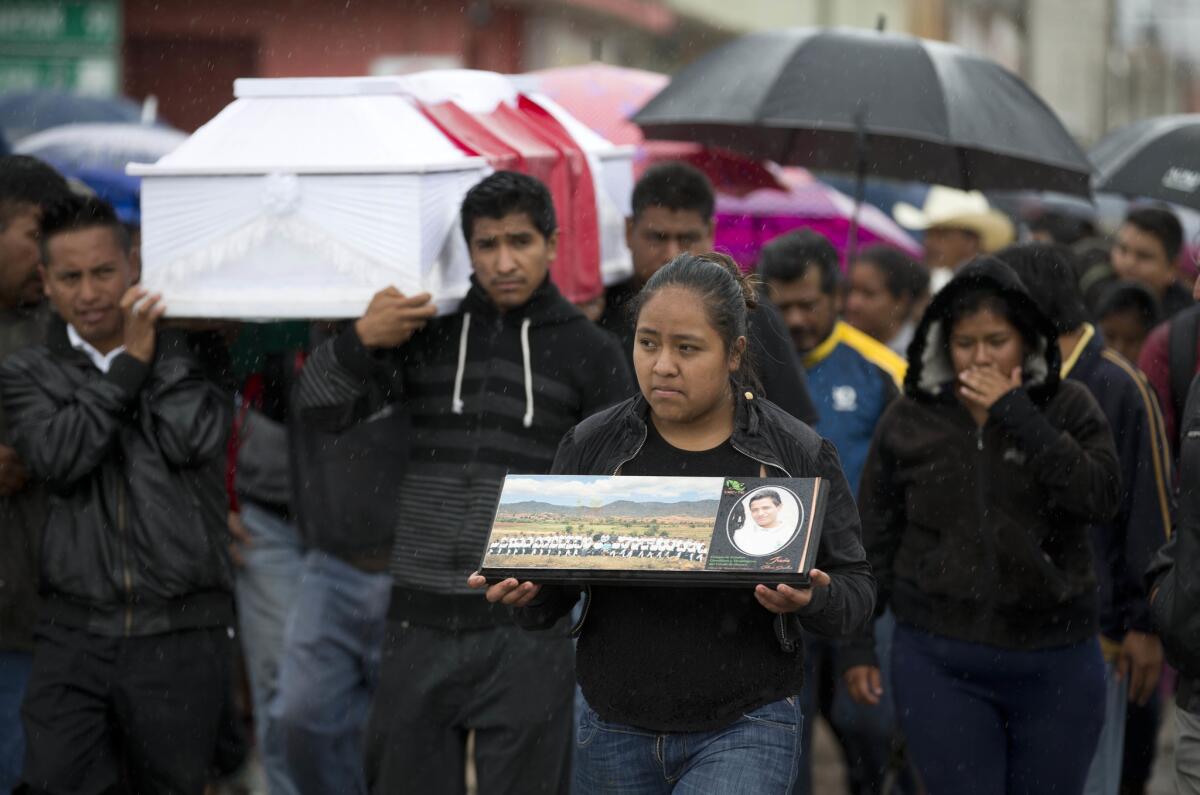
Eight people died, seven from gunshots, according to official accounts; the other was killed by fireworks, an often-volatile weapon wielded by protesters.
Among the dead was Sanchez’s son, Jesus Cadena Sanchez. All men, they were between 18 and 40 and lived in the area.
Contrary to the norteño band’s song, none of the dead were teachers. Many, like Cadena, apparently responded to cries for help.

Let’s think of our children and in the future of the people
Let everyone reflect and foster peace in the entire world
The town of Nochixtlan these days seems a calm place, though burned-out reminders remain — City Hall, police headquarters, the bus where the musicians performed their corrido.
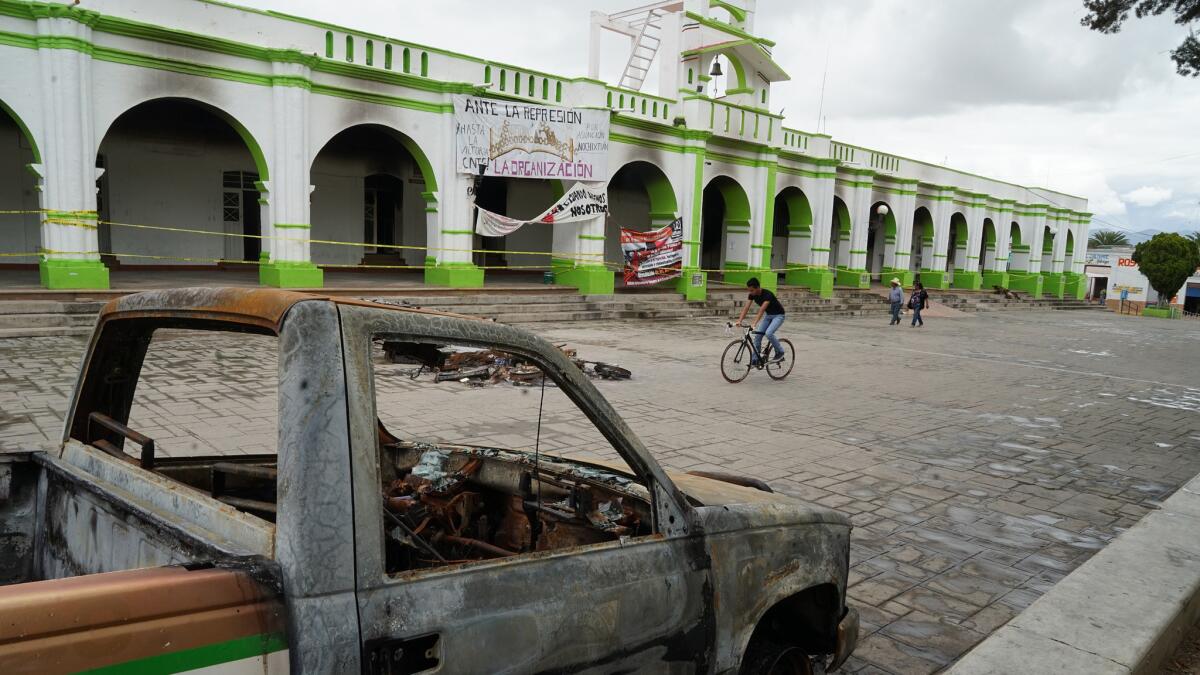
Still, along the toll highway, teachers continue to maintain a blockade with logs, piles of dirt and other debris.
They expressed little sympathy for the drivers stranded in the backed-up traffic, asserting that the merchandise was largely produced by big corporations. Mexico’s protesting teachers generally embrace the language of leftist, anti-corporate activism.
“These trucks are mostly trans-nationals,” scoffed a teacher in a blue hospital mask who gave his name as Pedro and, like other organizers interviewed, said he didn’t want to be identified for security reasons. “They bring in a lot of Coca-Cola and processed food that is poisoning people.”
A few blocks from downtown, Patricia Sanchez Meza recounted how her son was eager to attend university to study engineering, but couldn’t afford the entrance exams. Sanchez, a widow with four daughters, cooks food at home and sells it to generate some income for her family.
“I thought of going to Mexico City and getting a job to help Jesus pay for the exams,” she said, sitting in a small, dark room that has become a kind of shrine, featuring photos of her son, candles, flowers and a cross.
Among the documents she pulled from an envelope filled with mementos of Cadena’s life was a death certificate concluding that he died from “intense internal hemorrhage caused by the perforation of the left iliac artery” in his pelvis. He also suffered a wound to his right arm, possibly the “graze” he had mentioned to his mother.
That day, as Sanchez had waited anxiously for Cadena to come home, a nurse arrived to inform the family of his fate. “It’s not my son!” Sanchez insisted. But a trip to the hospital confirmed the worst.
Among the pictures she showed was a morgue photograph of Cadena and two other young men, all wrapped in blood-spattered white plastic. Only visible were their heads, their faces frozen.
Other images from the envelope were from her son’s cellphone, his last photos.
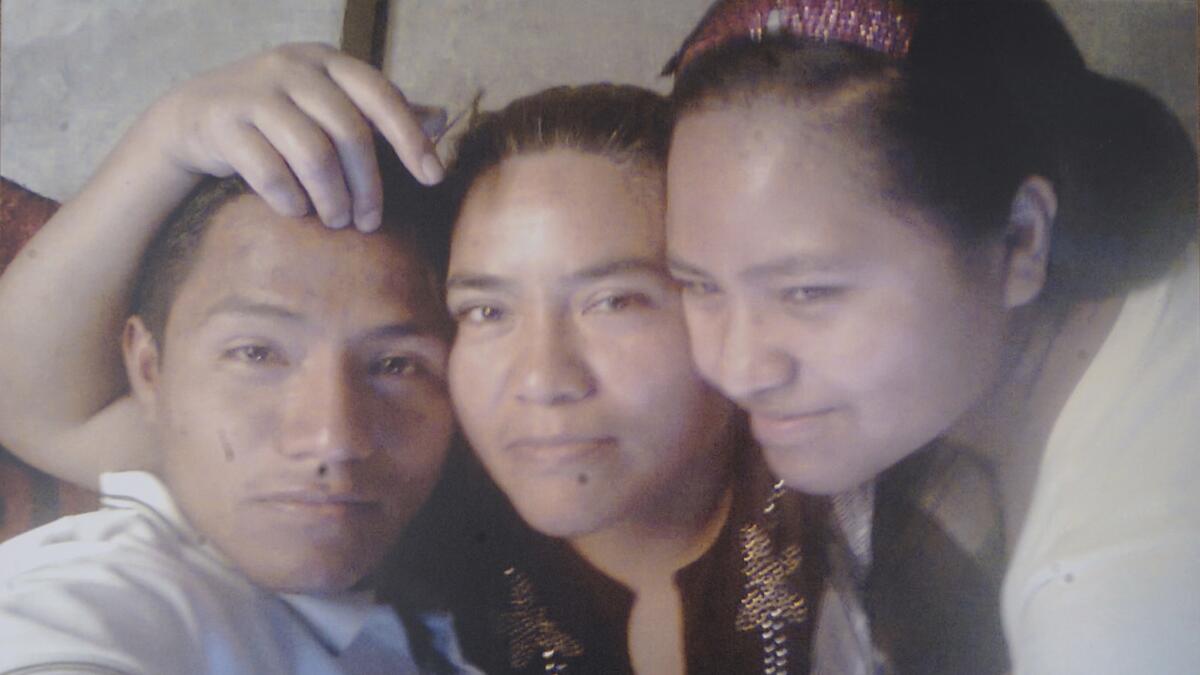
One was a selfie with his mother and a sister, Maria Fernanda, 16. Others document the June 19 upheaval: people milling about; smoke swirling from burning vehicles — and, finally, a police officer in a helmet pointing a pistol directly at the camera.
Like others here, Sanchez said she supports the teachers in principle but objected to the blockade and a walkout that left children without school — a tactic that angered parents throughout Oaxaca, where education is widely viewed as the best chance to rise from poverty. Her son, she said, rushed to the scene to show solidarity and aid wounded townsfolk, not as a political act.
Recently, she said, a government official offered each of the families of the dead 45,000 pesos, about $2,500, to defray funeral costs.
“I don’t want money,” she said. “I won’t accept any payment until justice is done for my son. I want the people responsible for my son’s death to be in jail. … The government has to earn my trust, and not with money.”
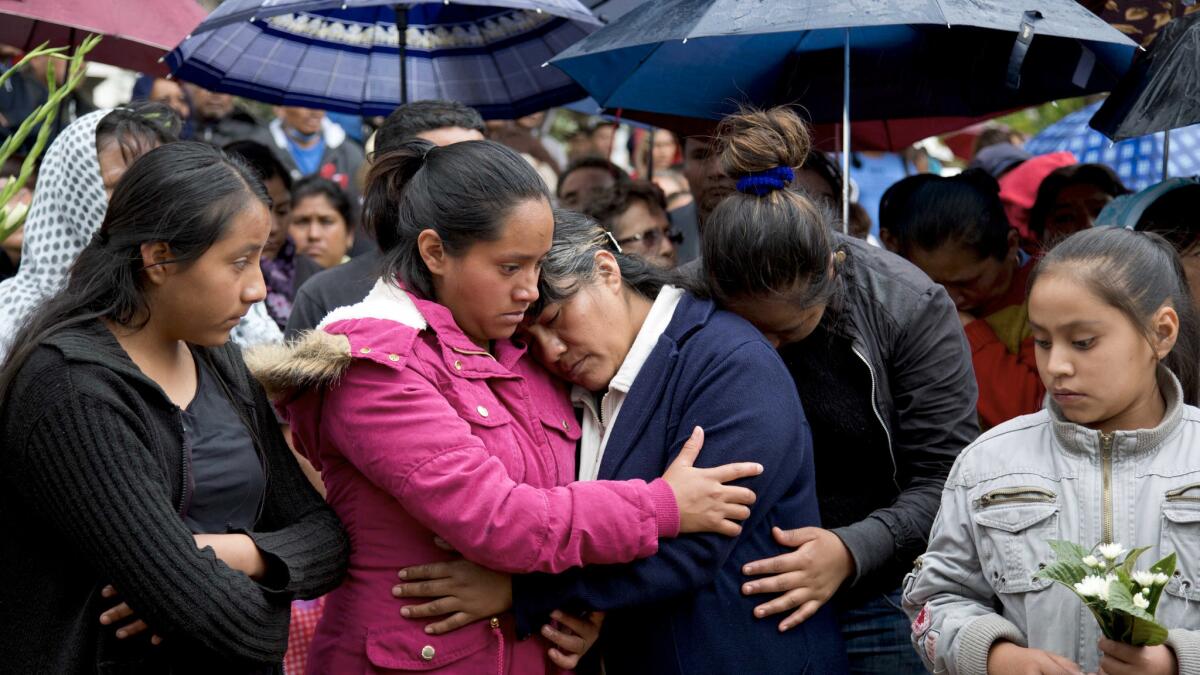
Twitter: @mcdneville
Cecilia Sanchez of The Times’ Mexico City bureau and special correspondent Liliana Nieto del Rio in Asuncion Nochixtlan contributed to this report.
ALSO
Why teachers have been occupying one of Mexico’s most alluring public spaces since May
Major election losses could threaten ruling party’s grip on Mexican presidency
Raised in the U.S. without legal status, he attains the American dream—in Mexico
Sign up for Essential California
The most important California stories and recommendations in your inbox every morning.
You may occasionally receive promotional content from the Los Angeles Times.






